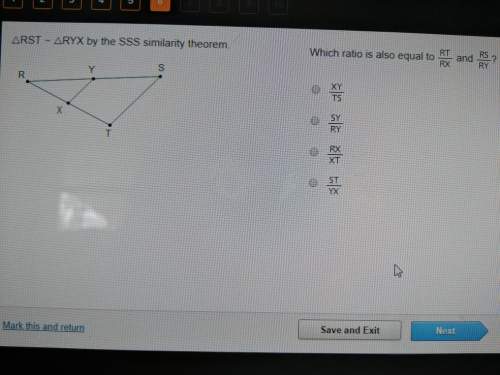
Mathematics, 02.11.2020 16:30 brien301
The differential equation y+y2=(y5+x)y′ can be written in differential form: M(x, y)dx+N(x, y)dy=0 where M(x, y)= , and N(x, y)= . The term M(x, y)dx+N(x, y)dy becomes an exact differential if the left hand side above is divided by y2. Integrating that new equation, the solution of the differential equation is =C.

Answers: 2


Other questions on the subject: Mathematics

Mathematics, 21.06.2019 13:40, harleyy6802
What is the correlation coefficient for the data? don't forget to turn the diagnoisticon (in the catalog menu of the calculator). r = answer (round to the nearest thousandth)
Answers: 1



Mathematics, 21.06.2019 16:00, sierravick123owr441
Brent needs to paint a logo made using two right triangles. the dimensions of the logo are shown below. what is the difference between the area of the large triangle and the area of the small triangle? (1 point) select one: a. 4.5 cm2 b. 8.5 cm2 c. 16.5 cm2 d. 33.0 cm2
Answers: 1
You know the right answer?
The differential equation y+y2=(y5+x)y′ can be written in differential form: M(x, y)dx+N(x, y)dy=0 w...
Questions in other subjects:

English, 04.08.2019 08:40

Physics, 04.08.2019 08:40



Physics, 04.08.2019 08:40



History, 04.08.2019 08:40





